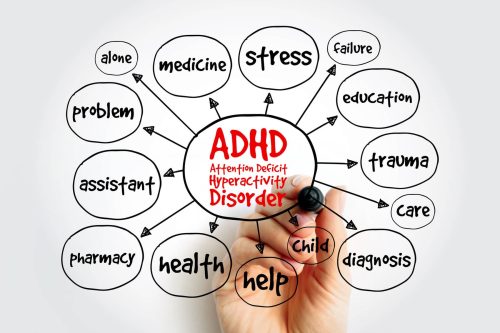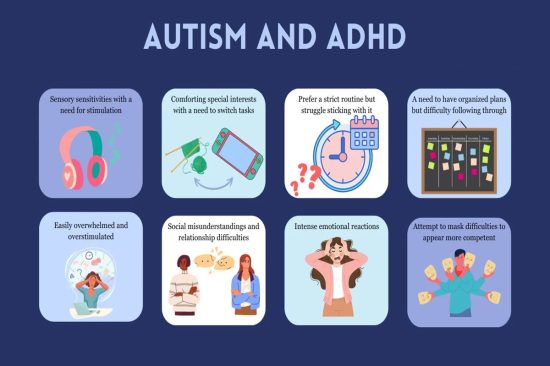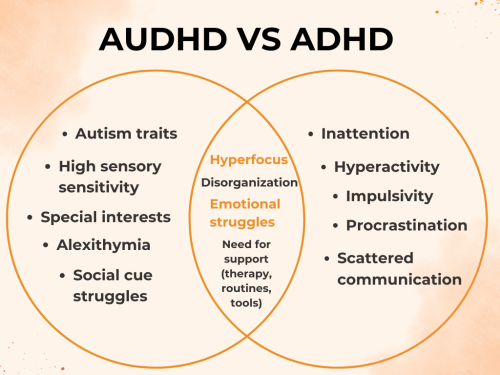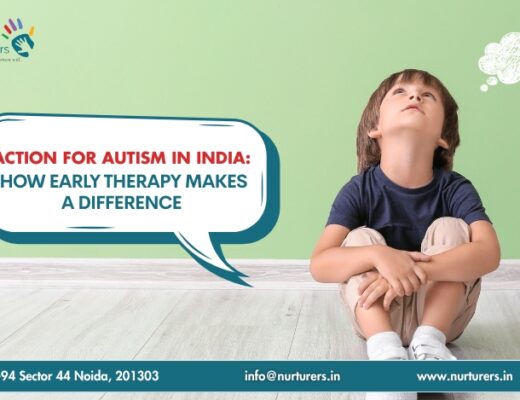Understanding the Difference Between ADHD and Autism is essential for parents, educators, and caregivers. While both are neurodevelopmental conditions that can affect children’s behavior and learning, they are very different in how they impact attention, communication, social skills, and development.
In this blog, we’ll walk you through what autism and ADHD are, how they overlap, how they differ, and why understanding the difference between autism and ADHD is crucial to providing the right support.
What is Autism?
Autism, or Autism Spectrum Disorder (ASD), is a lifelong developmental condition that affects how individuals perceive the world and interact with others. It is called a “spectrum” because symptoms and severity can vary significantly from one person to another.
Children with autism may struggle with understanding social cues, building relationships, and communicating in ways that are considered typical. They often prefer routines and predictability and may have specific, intense interests that they focus on for long periods.
Some common characteristics of autism include:
- Difficulty with eye contact, facial expressions, and body language
- Delayed speech development or unusual ways of using language
- Repetitive behaviors such as hand-flapping, rocking, or repeating words
- A strong preference for routine and resistance to change
- Intense focus on specific subjects or activities
- Sensory sensitivities—being easily overwhelmed by loud noises, textures, or bright lights
Autism is typically noticeable before age three, and early intervention is key. Therapies such as speech therapy, occupational therapy, social skills training, and behavioral therapy can help children develop important life skills and independence.

What is ADHD?
ADHD stands for Attention-Deficit/Hyperactivity Disorder. It is a brain-based condition that makes it difficult for a person to concentrate, sit still, and control impulsive behavior. ADHD often shows up in early childhood, especially when children start school and face greater demands on attention and behavior.
The main features of ADHD include:
- Inattention, such as forgetting instructions, being easily distracted, and having trouble organizing tasks
- Hyperactivity, which may involve fidgeting, talking excessively, or difficulty staying seated
- Impulsivity, including interrupting others, blurting out answers, or acting without thinking
Children with ADHD may struggle to focus in class, frequently lose belongings, and find it difficult to complete tasks or follow directions. Their energy and impulsiveness can affect relationships and academic performance.
ADHD is often managed with behavioral interventions, parent training, and sometimes medication. Support at school and at home is essential to help children with ADHD succeed.

What’s the Relationship Between Autism and ADHD?
Autism and ADHD are separate conditions, but they share some overlapping traits. It’s not uncommon for a child to be diagnosed with both. In fact, studies show that many children with autism also meet the criteria for ADHD, and vice versa.
Both conditions can include:
- Trouble paying attention
- Difficulty with emotional regulation
- Challenges in social situations
- Impulsive behavior
- Sensory sensitivities
However, while they may look similar on the surface, the underlying reasons for the behaviors are different. For example, a child with autism may avoid eye contact because it feels uncomfortable or overwhelming, while a child with ADHD may forget to maintain eye contact because their attention shifts rapidly.
Until recently, clinicians were hesitant to diagnose both conditions in the same individual. But now it is widely accepted that someone can have both autism and ADHD. When that’s the case, it’s called a dual diagnosis, and treatment plans should be carefully designed to address the needs related to each condition.

What are the Main Differences Between Autism and ADHD?
Though they share some symptoms, autism and ADHD have very different core features. Understanding the difference between autism and ADHD helps in identifying each condition accurately and tailoring the right support.
One major difference lies in social communication. Children with autism often find it difficult to understand and respond to social cues. They may not notice when someone is upset, have trouble reading facial expressions, or may not respond to their name being called. They might prefer playing alone and may not seek out friendships.
In contrast, children with ADHD usually want to interact and make friends but may struggle with social boundaries. They might interrupt conversations, talk too much, or act without thinking, which can lead to difficulties in maintaining friendships.
Another key distinction is in behavior patterns. Children with autism typically prefer predictable routines and can become very distressed when those routines are disrupted. They may engage in repetitive behaviors and show deep, narrow interests in specific topics. A child with ADHD, on the other hand, is usually more spontaneous and less rigid. They might be impulsive and easily bored, constantly shifting attention from one activity to another.
Language development is also different. Children with autism may have delayed speech or use language in unusual ways, such as repeating phrases or using robotic tones. ADHD children usually develop speech on time but might have difficulty organizing their thoughts when speaking or may talk excessively without noticing cues to stop.
Lastly, sensory experiences can help distinguish the two. Sensory sensitivity is more commonly associated with autism. Children might be overwhelmed by sounds, lights, smells, or textures and may either avoid or fixate on sensory input. While children with ADHD can also have sensory challenges, they are usually less severe and more related to seeking stimulation (e.g., constantly fidgeting or tapping).
Understanding these differences helps parents and professionals develop more effective intervention strategies tailored to the child’s unique needs.

Final Thought
The Difference Between ADHD and Autism can be subtle, but it’s essential to recognize for effective support and treatment. While both conditions affect behavior, attention, and social skills, the root causes, expressions, and long-term needs are distinct.
Recognizing the difference between autism and ADHD allows parents, educators, and therapists to approach each child with the tools that will help them thrive. A child with autism may need help understanding emotions and building social connections, while a child with ADHD may need support in staying organized and managing impulses.
If you are unsure whether your child shows signs of ADHD, autism, or both, it’s important to seek a thorough evaluation from a qualified healthcare provider. Early identification and the right support system can make a tremendous difference in a child’s confidence, growth, and future.
At Nurturers, we are committed to guiding families through every step of this journey. Whether your child is navigating attention difficulties, social challenges, or both, we’re here with compassionate, individualized care and evidence-based interventions.

Hi! I am Swati Suri, a Special Educator with 9+ years of experience and the founder of Nurturers. I am passionate about helping children with special needs and supporting their families every step of the way.



